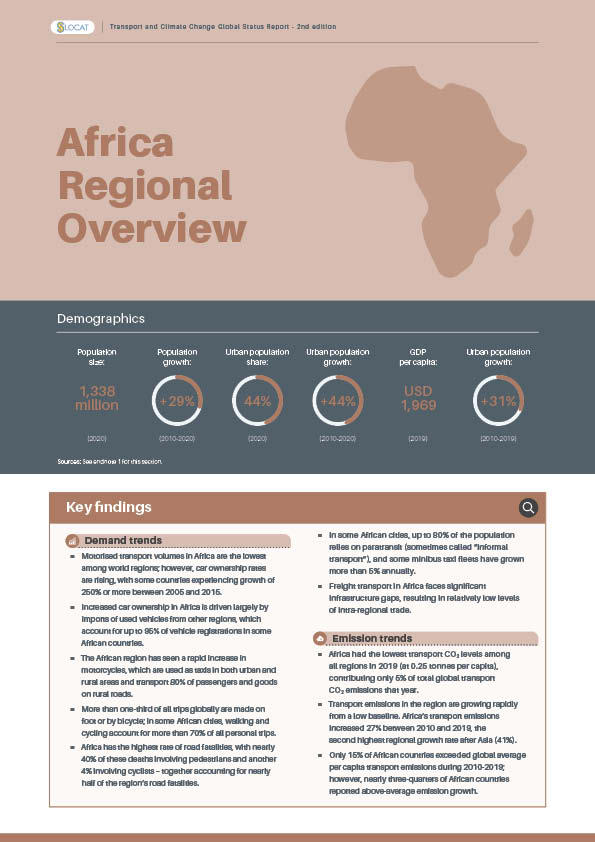Africa Regional Overview
Population size
(2020)
Population growth
(2010-2020)
%
GDP growth
(2010-2019)
%
Total vehicle sales
growth (2010-2019)
%
Total transport CO2
emissions (2019)
Share of global transport
CO2 emissions (2019)
%
Rapid urbanisation trends in Africa continued in 2019 and 2020, and the region’s megacities (many in West Africa) are expected to represent all of the world’s 10 fastest growing cities (and 21 of the top 30) from 2018 to 2035. Car ownership has remained low by global standards, with only 38 cars per 1,000 people in 2015, but is rising rapidly in many countries including Ghana, Madagascar and Tanzania. African populations rely heavily on imported used vehicles and on paratransit as a primary source of mobility.
Historically, regional transport investments have been focused mainly on developing infrastructure for private vehicles, although most of the African population does not have access to this form of transport. Walking is a dominant mode of travel in the region, but fewer resources have been allocated to pedestrian and cycling infrastructure, exacerbating issues of social inequity and access to transport. Overall, a lack of robust data on urban and rural transport in Africa makes quantifying trends and calculating emissions difficult, although efforts are being made to fill in critical data and information gaps. The COVID-19 pandemic has created additional challenges for transport systems in Africa.
Key Findings
-
Demand Trends
Motorised transport volumes in Africa are the lowest among world regions; however, car ownership rates are rising, with some countries experiencing growth of 250% or more between 2005 and 2015.
Figure 1.
Car ownership rates per 1,000 people in Africa, 2015
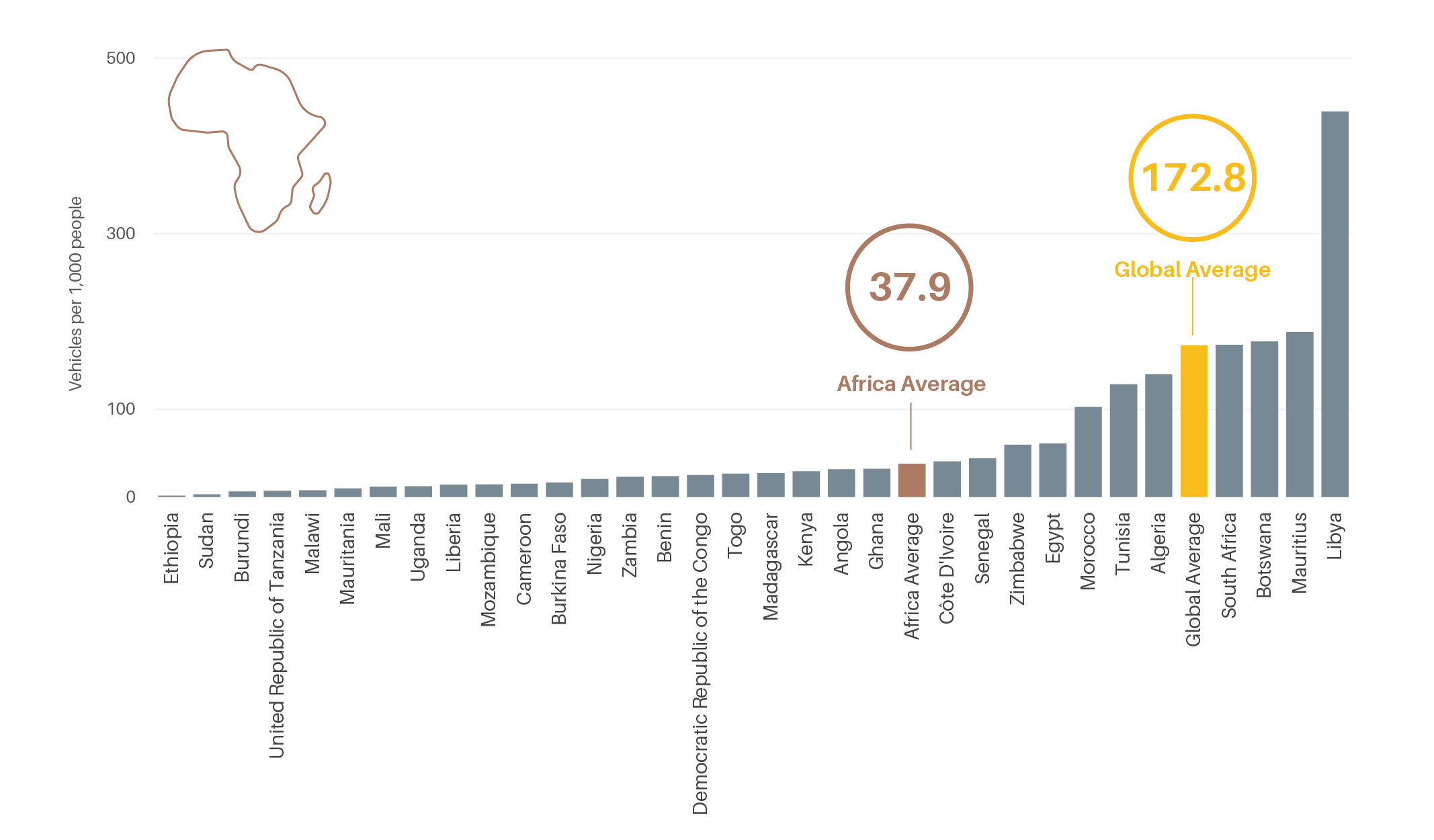
Increased car ownership in Africa is driven largely by imports of used vehicles from other regions, which account for up to 95% of vehicle registrations in some African countries.
Figure 2.
Growth in car ownership in Africa, 2005-2015
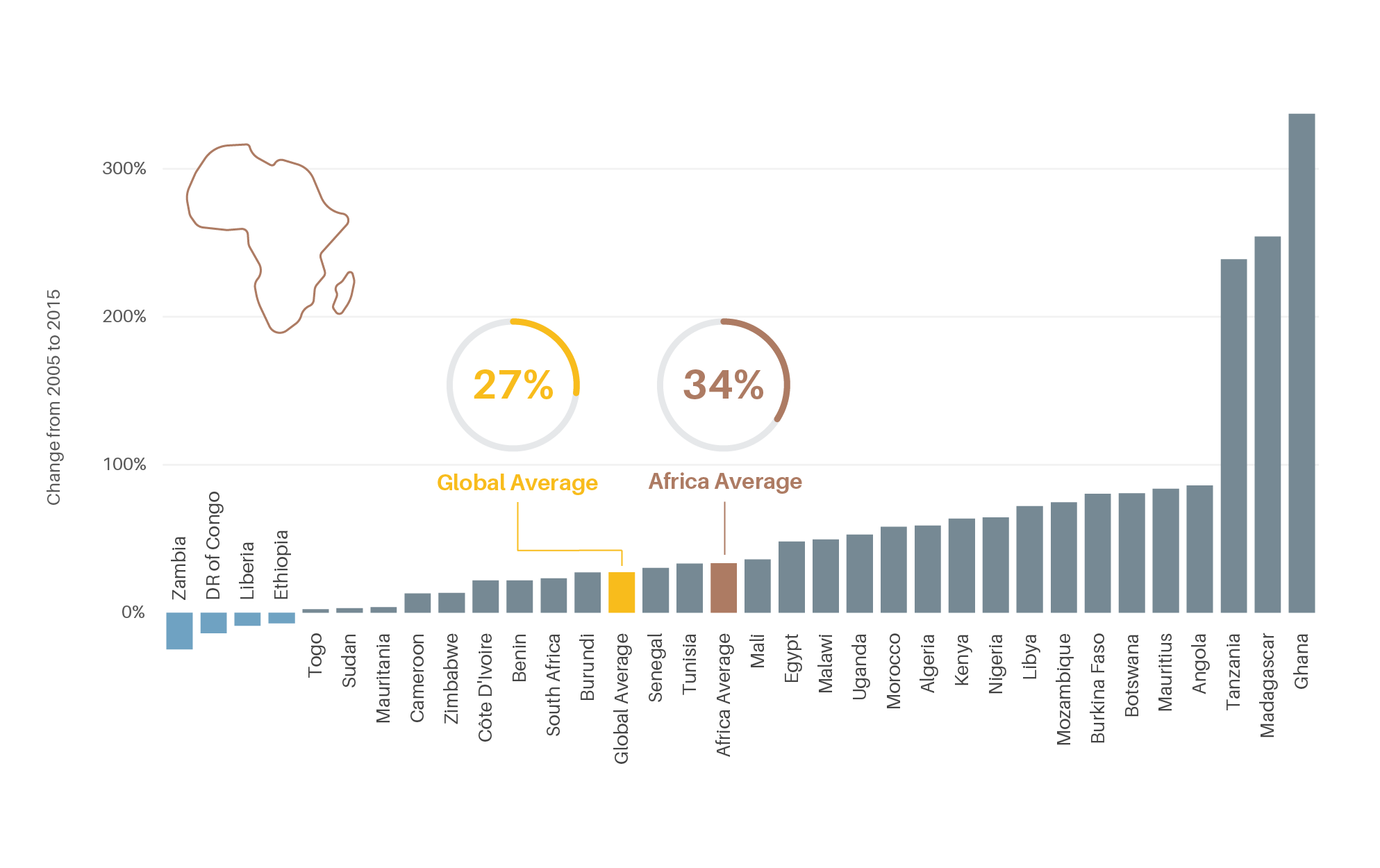
The African region has seen a rapid increase in motorcycles, which are used as taxis in both urban and rural areas and transport 80% of passengers and goods on rural roads.
More than one-third of all trips globally are made on foot or by bicycle; in some African cities, walking and cycling account for more than 70% of all personal trips.
Africa has the highest rate of road fatalities, with nearly 40% of these deaths involving pedestrians and another 4% involving cyclists – together accounting for nearly half of the region’s road fatalities.
In some African cities, up to 80% of the population relies on paratransit (sometimes called “informal transport”), and some minibus taxi fleets have grown more than 5% annually.
Freight transport in Africa faces significant infrastructure gaps, resulting in relatively low levels of intra-regional trade.
-
Emission Trends
Africa had the lowest transport CO2 levels among all regions in 2019 (at 0.25 tonnes per capita), contributing only 5% of total global transport CO2 emissions that year.
Transport emissions in the region are growing rapidly from a low baseline. Africa’s transport emissions increased 27% between 2010 and 2019, the second highest regional growth rate after Asia (41%).
Only 15% of African countries exceeded global average per capita transport emissions during 2010-2019; however, nearly three-quarters of African countries reported above-average emission growth.
Figure 3.
Per capita transport CO2 emissions in Africa, 2019
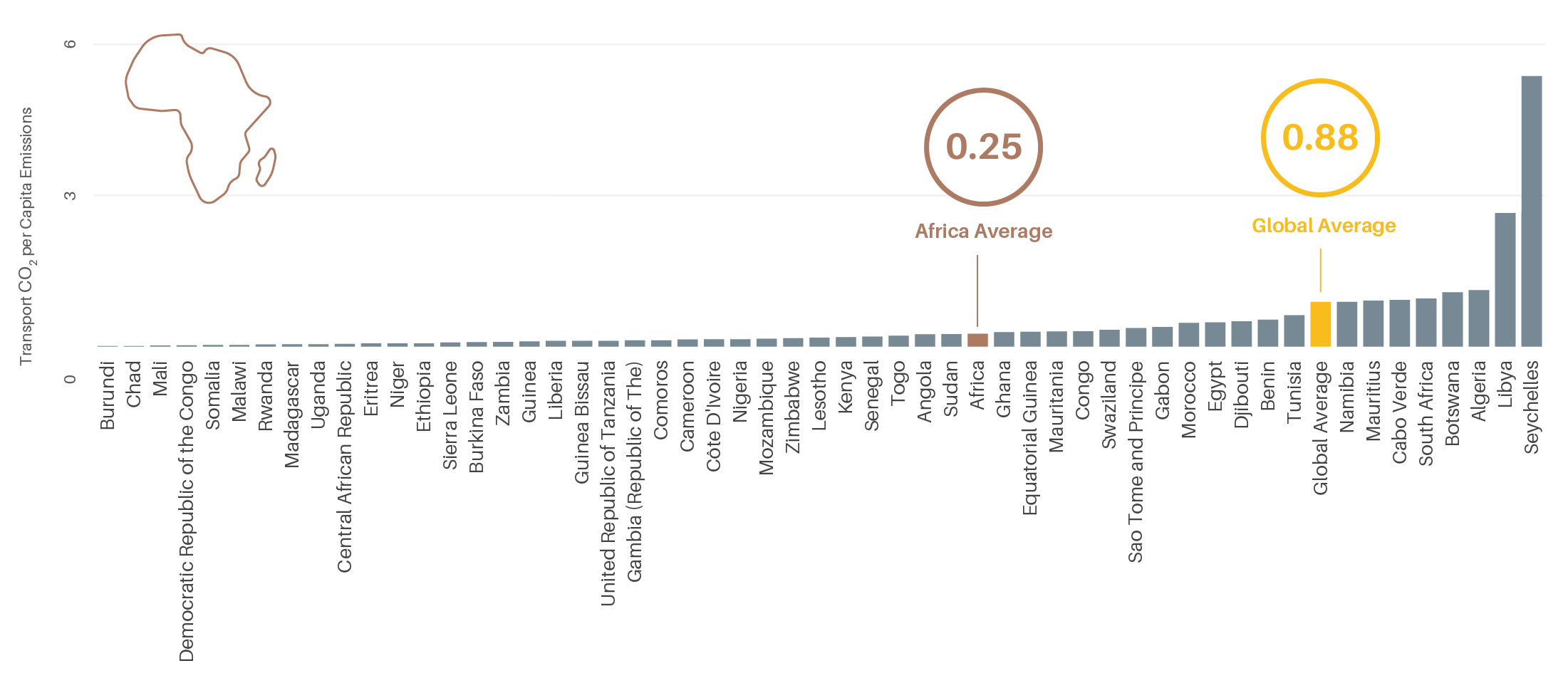
Figure 4.
Change in transport CO2 emissions in Africa, 2010-2019
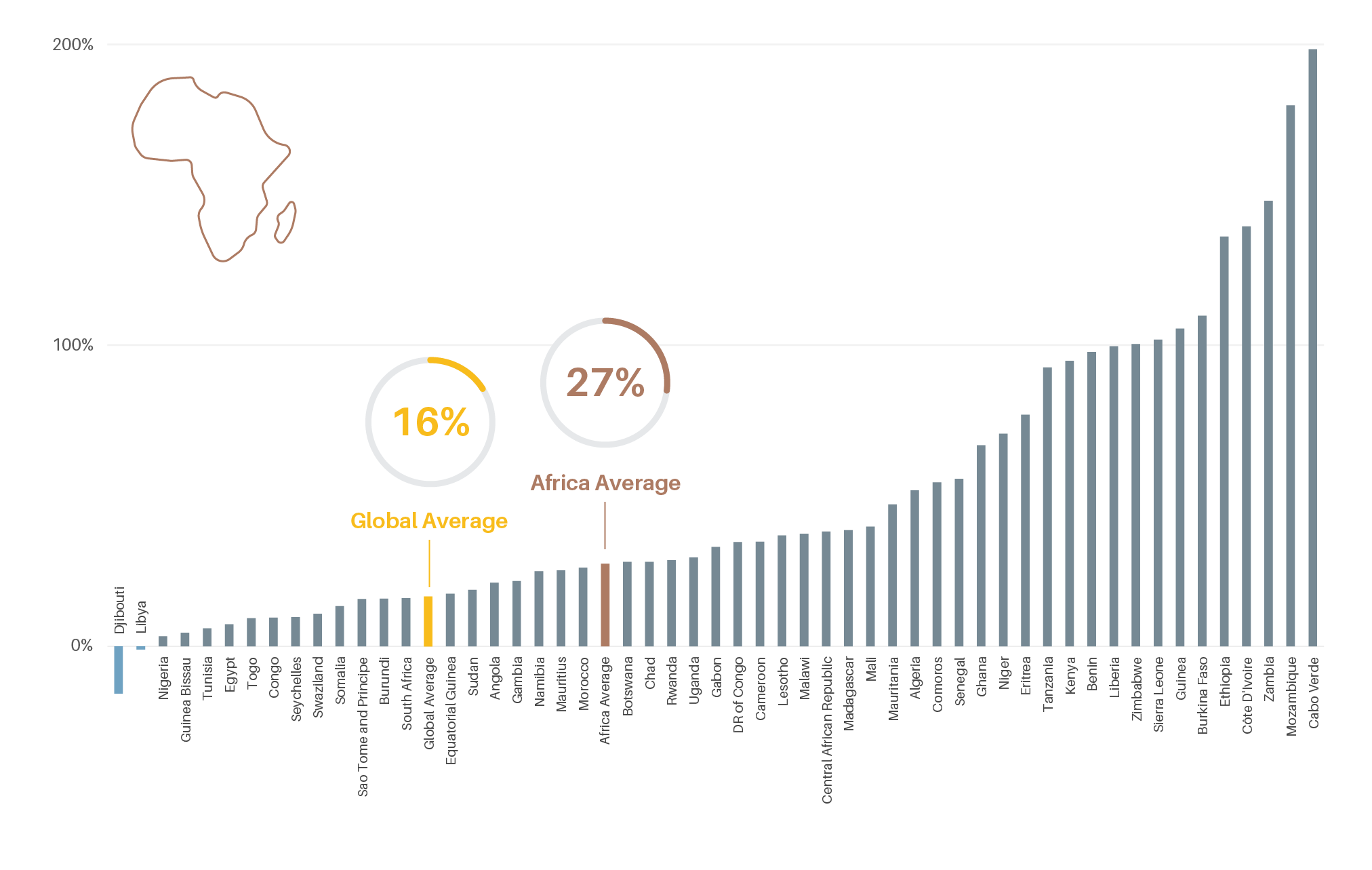
-
Policy Measures
Walking and cycling infrastructure improvements are expanding the options for safe, low-carbon mobility, accounting for up to 20% of overall transport budgets in some African cities.
Broader adoption of sustainable urban mobility plans (SUMPs) reflects more comprehensive planning approaches; however, SUMPs in Africa trail other regions relative to population share.
Despite recent improvements, only 35% of residents in Sub-Saharan Africa live within 500 metres of access to public transport, the lowest rate in the world and well below the global average of 49%.
Enhancements to paratransit services – including increased regulation, fleet renewals and digital technologies – are increasing access to mobility across Africa.
Actions aimed at regulating vehicle and fuel quality standards are increasing and include bans on used vehicle imports as well as national and regional fuel economy roadmaps.
-
Impacts of the COVID-19 pandemic
Paratransit services have been particularly vulnerable to the COVID-19 pandemic, due to travel restrictions, reduced capacities and rising costs.
A number of African cities have expanded walking and cycling measures in response to COVID-19 to allow for physical distancing while commuting and recreating.

